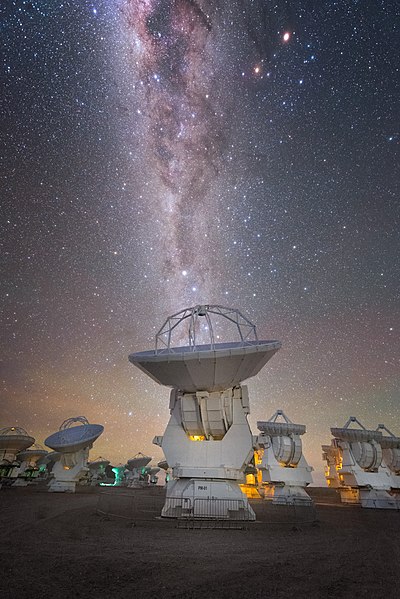| ¡Vikidia te necesita! Actualmente tenemos 6703 artículos. ¡Anímate! |
Archivo:Atacama Large Millimeter-submillimeter Array, Milky Way.jpg
Ir a la navegación
Ir a la búsqueda


Tamaño de esta previsualización: 400 × 599 píxeles. Otras resoluciones: 160 × 240 píxeles · 320 × 480 píxeles · 512 × 768 píxeles · 683 × 1024 píxeles · 1367 × 2048 píxeles · 4912 × 7360 píxeles.
Archivo original (4912 × 7360 píxeles; tamaño de archivo: 12,38 MB; tipo MIME: image/jpeg)
Historial del archivo
Pulsa sobre una fecha/hora para ver el archivo en ese momento.
| Fecha y hora | Miniatura | Dimensiones | Usuario | Comentario | |
|---|---|---|---|---|---|
| actual | 14:16 5 jun 2020 |  | 4912 × 7360 (12,38 MB) | wikimediacommons>Acagastya | {{Information |description ={{en|1=One of the most exhilarating results in modern astronomy is the knowledge that the Universe is full of worlds beyond our Solar System, known as exoplanets. Increasing evidence suggests that the majority of stars in the Universe have planets whizzing around them; one such system can be seen in this majestic Picture of the Week. The antennas here are among the 66 that make up the Atacama Large Millimeter/submillimeter Array (ALMA), located on the Chajnanto... |
Usos del archivo
La siguiente página usa este archivo:


